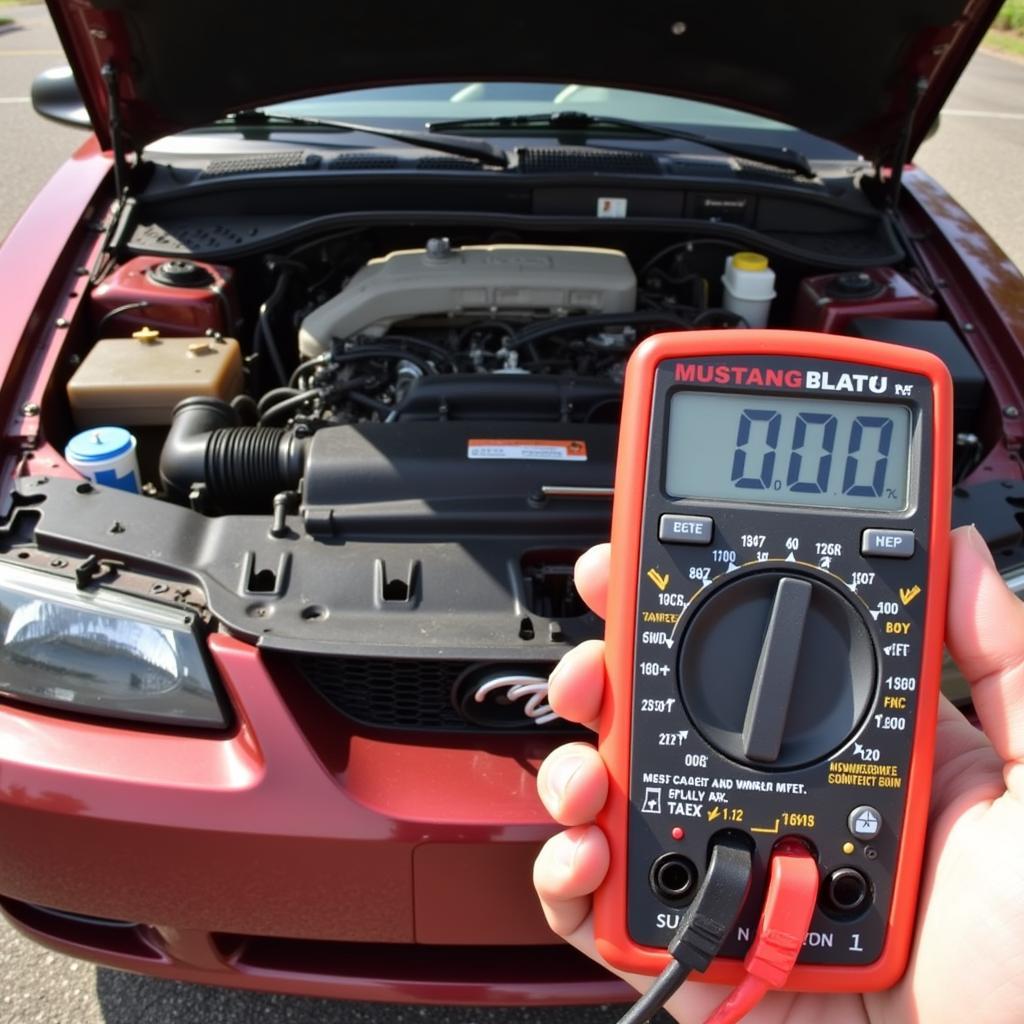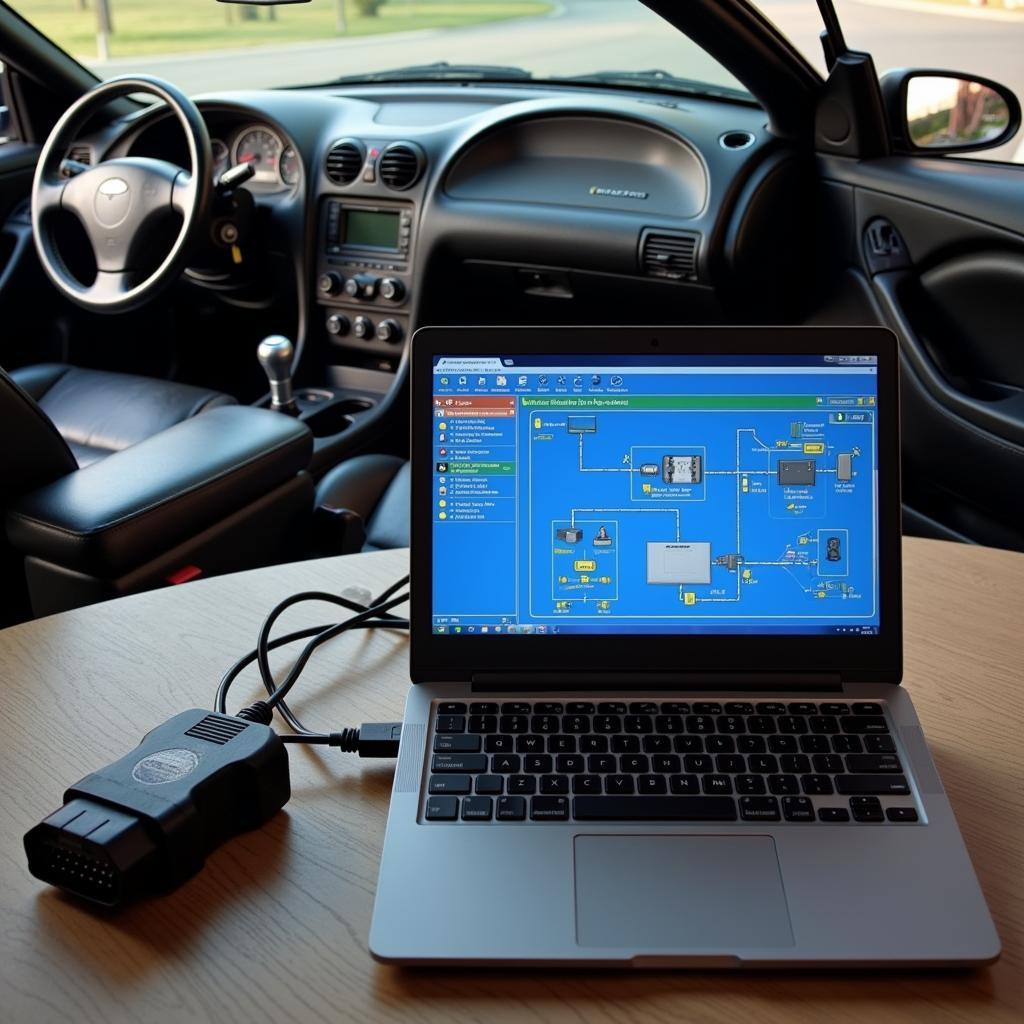A dead battery in your 2001 Mustang can be frustrating. This article will guide you through common causes of a 2001 mustang battery drain and provide practical solutions for diagnosing and fixing the issue, even remotely. We’ll explore everything from faulty alternators and parasitic draws to programming and software issues.
Common Causes of a 2001 Mustang Battery Drain
Several culprits can contribute to your 2001 Mustang’s battery drain. Understanding these will help you pinpoint the problem and get your car back on the road. These range from simple issues like a failing battery or corroded terminals to more complex electrical problems.
The Usual Suspects: Battery, Alternator, and Connections
The first place to look is the battery itself. An old or damaged battery simply won’t hold a charge. Next, check the alternator. A failing alternator won’t properly recharge the battery while the engine is running. Don’t forget to inspect the battery terminals and cables for corrosion or loose connections. These can disrupt the flow of electricity and lead to a drain.
The Hidden Culprit: Parasitic Draw
A parasitic draw occurs when a component continues to draw power even when the car is off. This can be a tricky issue to diagnose. Common culprits include interior lights, the radio, faulty door switches, or even aftermarket accessories.
Software and Module Issues: A Modern Twist
Modern cars like the 2001 Mustang rely heavily on software and electronic modules. A glitch in the software or a malfunctioning module can also lead to a battery drain. In these cases, remote diagnostics and software updates can be extremely helpful.
 Testing for Parasitic Draw in a Mustang
Testing for Parasitic Draw in a Mustang
Diagnosing Your 2001 Mustang Battery Drain
Here’s a step-by-step guide to help you diagnose the problem:
-
Test the battery: Use a multimeter to check the battery voltage. A healthy battery should read around 12.6 volts.
-
Inspect the alternator: With the engine running, the voltage should be around 14 volts. A lower reading suggests a failing alternator.
-
Check for parasitic draw: With the car off and all accessories turned off, use a multimeter to measure the current draw between the negative battery terminal and the negative battery cable. A draw of more than 50 milliamps indicates a parasitic draw.
-
Isolate the parasitic draw: If you find a parasitic draw, begin removing fuses one by one while monitoring the current draw. When the draw drops significantly, you’ve identified the circuit causing the problem.
-
Consider remote diagnostics: If the issue persists, remote diagnostics can help identify software or module problems.
“Remote diagnostics can be a game-changer for diagnosing complex electrical issues, especially in modern vehicles like the 2001 Mustang,” says John Miller, Senior Automotive Electrical Engineer. “It allows for a more in-depth analysis and can pinpoint problems that traditional methods might miss.”
 Remote Diagnostics on a 2001 Mustang
Remote Diagnostics on a 2001 Mustang
Solutions and Fixes for Battery Drain
Once you’ve identified the source of the drain, here are some solutions:
-
Replace a faulty battery or alternator: These are relatively straightforward fixes, but it’s crucial to use the correct replacement parts.
-
Repair or replace corroded terminals and cables: Cleaning the terminals or replacing damaged cables can resolve connection issues.
-
Address parasitic draws: This might involve replacing faulty switches, relays, or components.
-
Perform software updates: Remote programming can fix software glitches and update module settings.
“Don’t underestimate the impact of regular maintenance on preventing battery drain,” advises Sarah Chen, Automotive Technician. “Keeping your battery terminals clean and ensuring your alternator is functioning correctly can significantly extend the life of your battery.”
Conclusion
A 2001 mustang battery drain can stem from a variety of issues, from a simple bad battery to a more complex software problem. By systematically diagnosing the problem and following the steps outlined in this article, you can resolve the issue and get your Mustang back on the road. Remote diagnostic services and software updates offer valuable tools for tackling these problems efficiently and effectively.
FAQ
-
How long should a 2001 Mustang battery last? Typically, a car battery lasts 3-5 years.
-
Can extreme temperatures affect battery life? Yes, both extreme heat and cold can shorten battery life.
-
How do I know if my alternator is bad? Dim headlights and flickering dashboard lights can be signs of a failing alternator.
-
What is the best way to clean battery terminals? A mixture of baking soda and water can effectively clean corroded terminals.
-
How much does it cost to replace a Mustang battery? The cost varies depending on the battery type, but typically ranges from $100-$200.
-
Can a bad ground cause a battery drain? Yes, a poor ground connection can lead to a slow battery drain.
-
How can I prevent future battery drain issues? Regular maintenance, including cleaning battery terminals and checking the alternator, can help prevent future problems.

